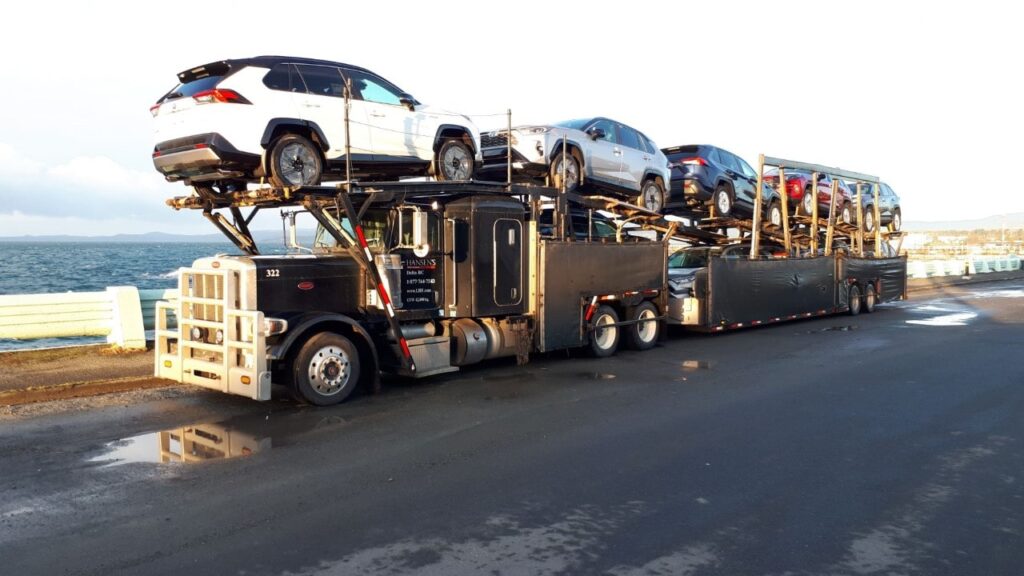Shipping a vehicle to or from a suburban area requires careful planning and consideration. Suburban neighborhoods often present unique challenges for auto transporters, such as narrow streets, limited maneuvering space, and local regulations. Understanding these factors and preparing accordingly can ensure a smooth and efficient vehicle delivery process.
In this guide, we’ll explore key guidelines to help you navigate suburban vehicle delivery, ensuring your vehicle arrives safely and on time.
1. Understand Local Regulations and Restrictions
Suburban areas may have specific regulations that impact vehicle delivery, including:
Street Widths and Access: Many suburban streets are narrower than urban roads, which can make it challenging for large transport trucks to navigate. It’s essential to assess the accessibility of your pickup and delivery locations.
Weight Limits and Permits: Some neighborhoods impose weight restrictions on vehicles operating within their boundaries. Transporters may need special permits to operate in these areas.
Parking and Loading Zones: Restrictions on parking or designated loading zones can affect where a transport truck can safely load or unload your vehicle.
Before scheduling a delivery, consult with your auto transport provider to ensure they are aware of and can comply with any local regulations.
2. Choose the Right Transport Method
Selecting the appropriate transport method is crucial for suburban vehicle delivery:
Open Transport: This is the most common and cost-effective method, where vehicles are transported on an open carrier. While it exposes the vehicle to the elements, it’s suitable for most vehicles and short distances.
Enclosed Transport: For high-value, classic, or luxury vehicles, enclosed transport offers added protection from weather and road debris. This method is more expensive but provides peace of mind for valuable vehicles.
Discuss with your transport provider to determine the best option based on your vehicle’s value, condition, and the specific challenges of suburban delivery.
3. Prepare Your Vehicle for Transport
Proper preparation can prevent issues during the delivery process:
Clean the Vehicle: Washing your vehicle allows for a thorough inspection and documentation of its condition before transport.
Remove Personal Items: Transport companies typically do not allow personal items inside the vehicle during transit. Removing these items reduces the risk of damage and potential liability issues.
Check Fluid Levels: Ensure that all fluids are at appropriate levels and that there are no leaks. This is particularly important for long-distance deliveries.
Disable Alarms: To prevent unnecessary disruptions during transport, disable any vehicle alarms.
Document Existing Damage: Take clear photographs of any existing damage to the vehicle. This documentation can be crucial in case of disputes.
4. Communicate with Your Transport Provider
Clear communication with your auto transport provider is essential:
Provide Accurate Information: Ensure that the transport company has correct addresses, contact information, and any specific instructions related to your pickup and delivery locations.
Discuss Special Requirements: If your vehicle has specific needs or if there are challenges at the delivery location (e.g., narrow streets, steep driveways), inform your transport provider in advance.
Confirm Delivery Details: Before the scheduled delivery, confirm the date, time, and location with your transport provider. This helps avoid misunderstandings and ensures that someone is available to receive the vehicle.
5. Inspect the Vehicle Upon Delivery
Upon delivery, conduct a thorough inspection:
Check for Damage: Examine the vehicle for any new damage that may have occurred during transport.
Compare with Documentation: Refer to the condition report and photographs taken before transport to identify any discrepancies.
Sign the Delivery Receipt: Only sign the delivery receipt after completing the inspection and noting any issues. This protects you in case of claims.
Navigating suburban vehicle delivery requires understanding local regulations, selecting the appropriate transport method, preparing your vehicle adequately, maintaining clear communication with your transport provider, and conducting a thorough inspection upon delivery. By following these guidelines, you can ensure a smooth and efficient vehicle delivery process.
At Car Shipping Source, we specialize in providing reliable and efficient vehicle transport services, including suburban deliveries. Our experienced team is committed to ensuring your vehicle arrives safely and on time. Contact us today to learn more about our services and to receive a personalized quote.


